Student to Master Online Course
After many, many years of experience with Tui Na, Errol Lynch has produced an online course, ‘Tui Na Student to Master’. A step by step video on how to do and improve your Tui Na massage, you can study yourself by buying your own copy.
Filmed in China and England, with never before seen footage and many treatment demonstrations, Student to Master lasts two hours and twenty minutes and covers a variety of subjects, including many different hand techniques fundamental to Tui Na, Sports Massage and Da Tui Na (a Tui Na operation).
About Errol Lynch
‘My experience of Tui Na began when I participated in an Acupuncture clinical training study tour in Beijing in 1998. Since then, I’ve been fortunate enough to return to China each year to continue my training with doctors and professors of Tui Na. I have a passion for Chinese medical therapies, mainly Tui Na massage, Tui Na based reflexology, Cupping, Moxibustion and herbs.
I’ve studied other therapies, such as acupuncture, shiatsu, sports injury massage, massage in pregnancy, baby massage and holistic massage. Since finding Tui Na and seeing first-hand the difference it can make, I’ve made it the major part of my repertoire of therapies.’
Video Stills
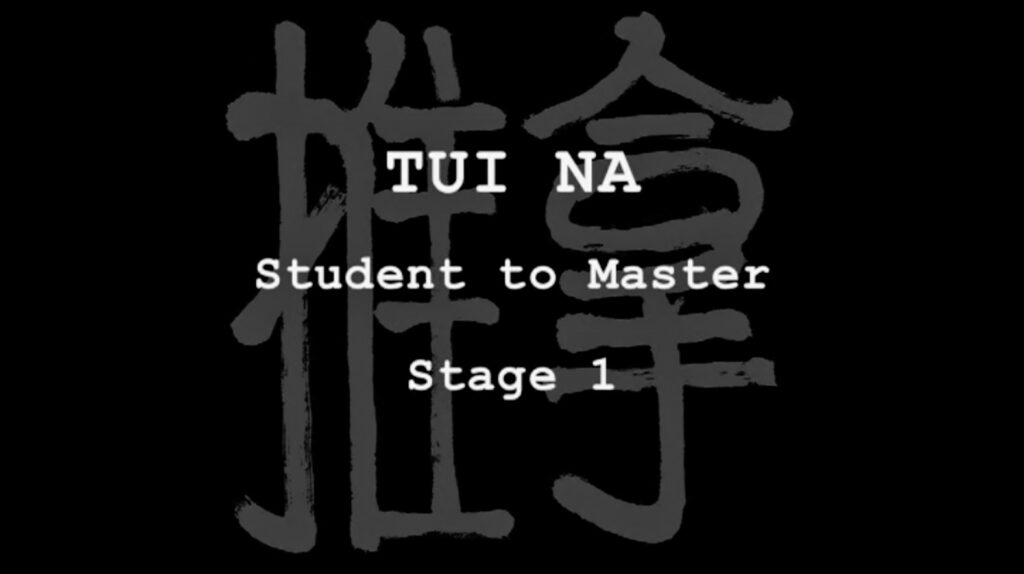
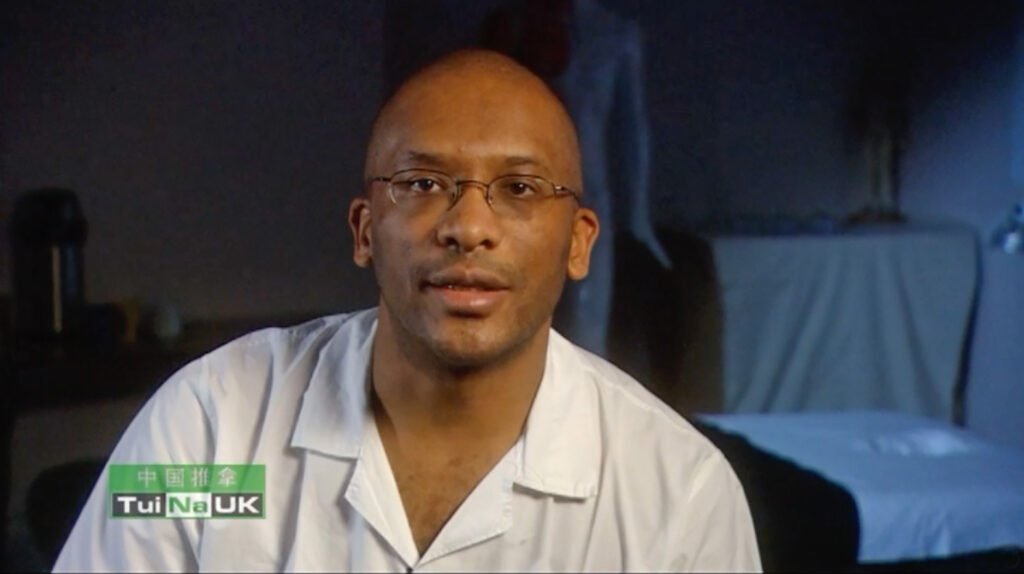
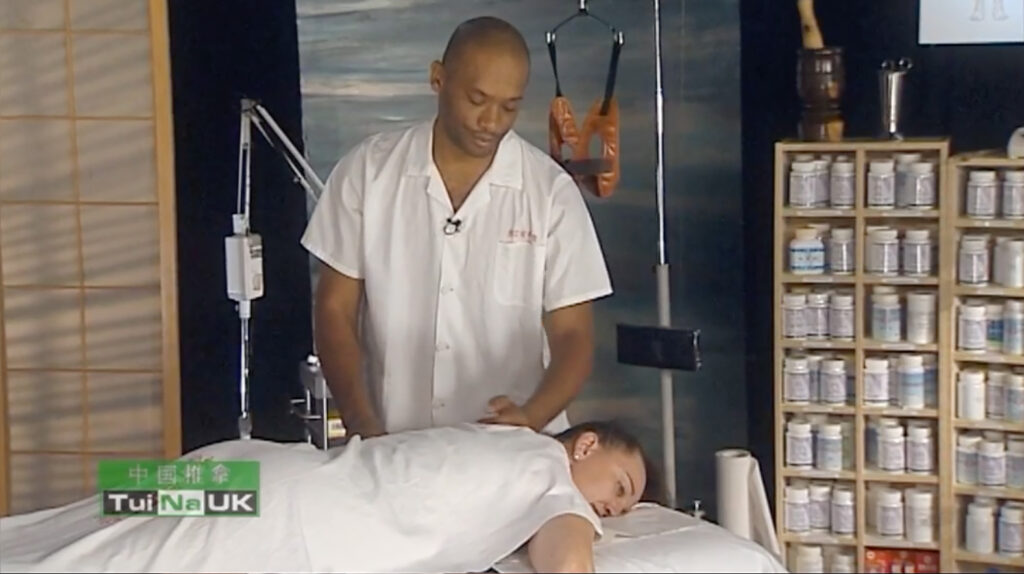
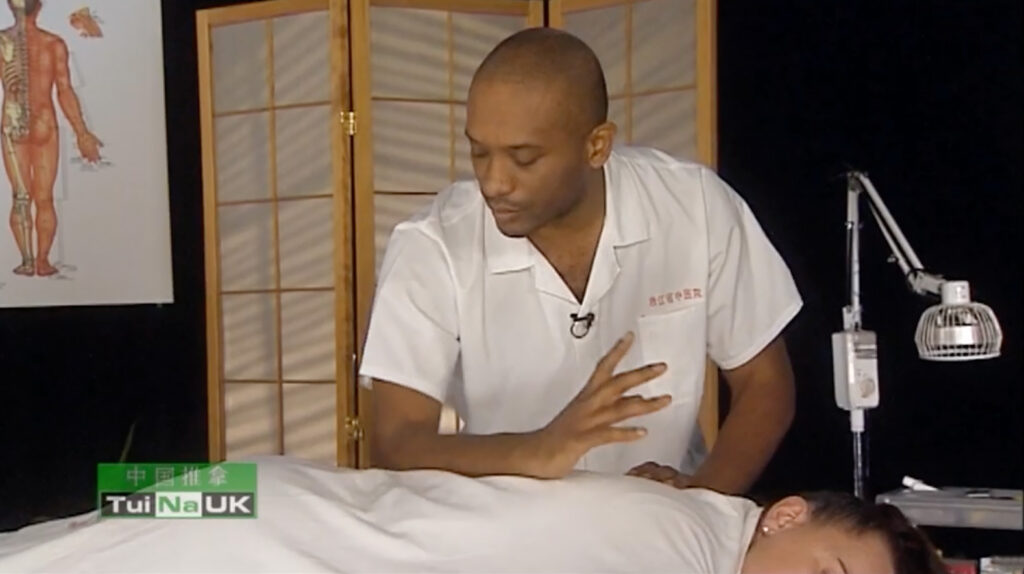
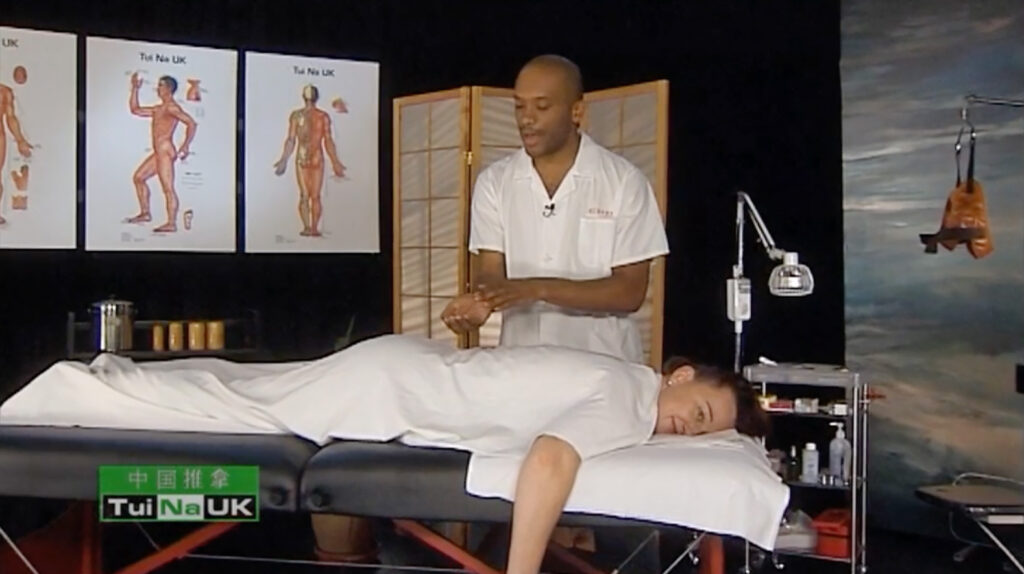
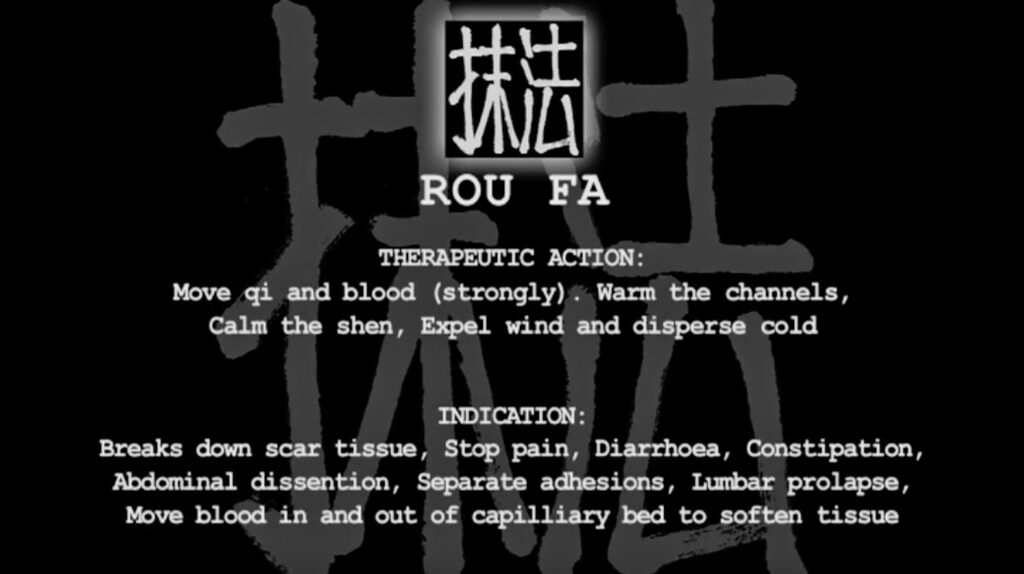
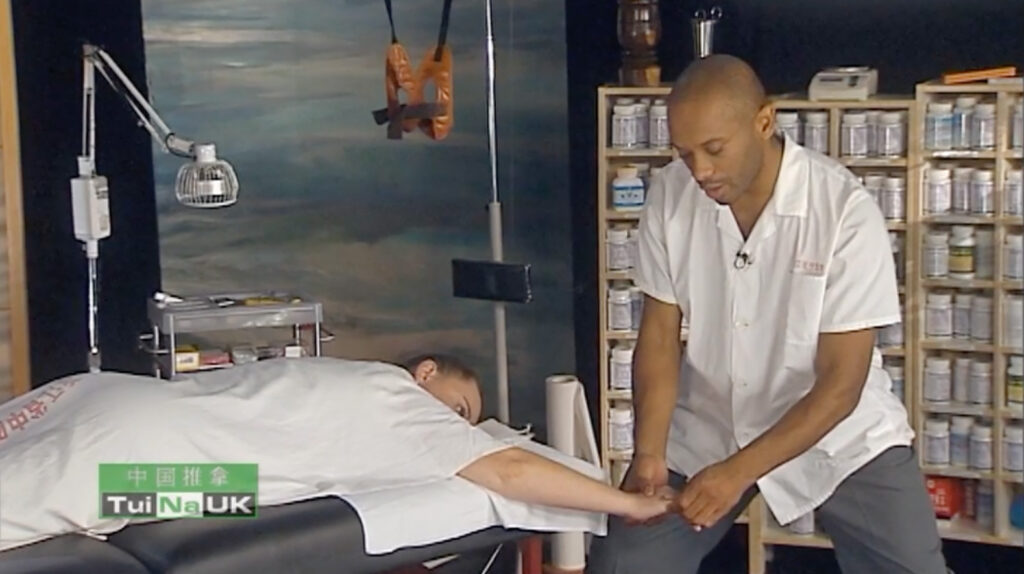
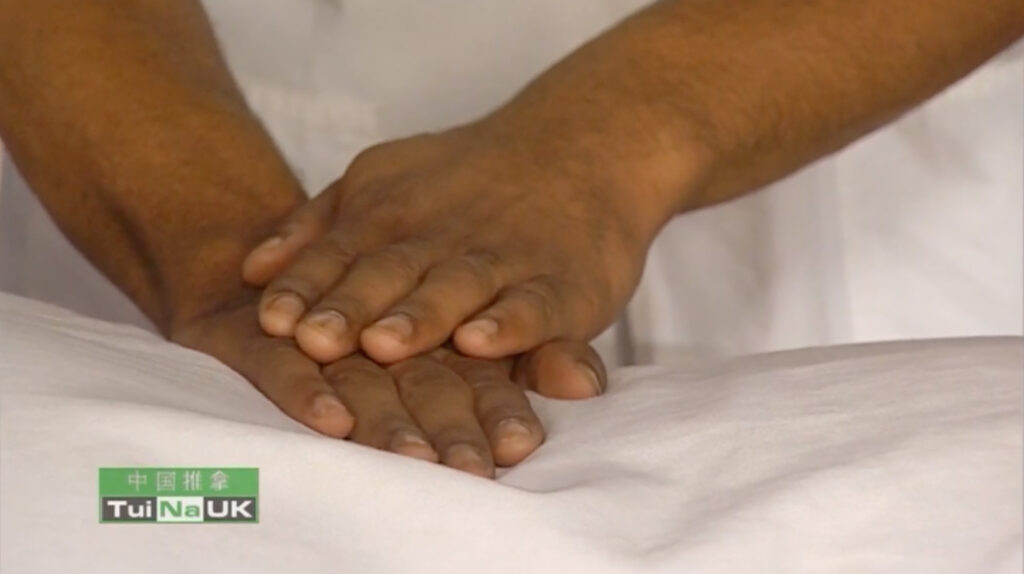
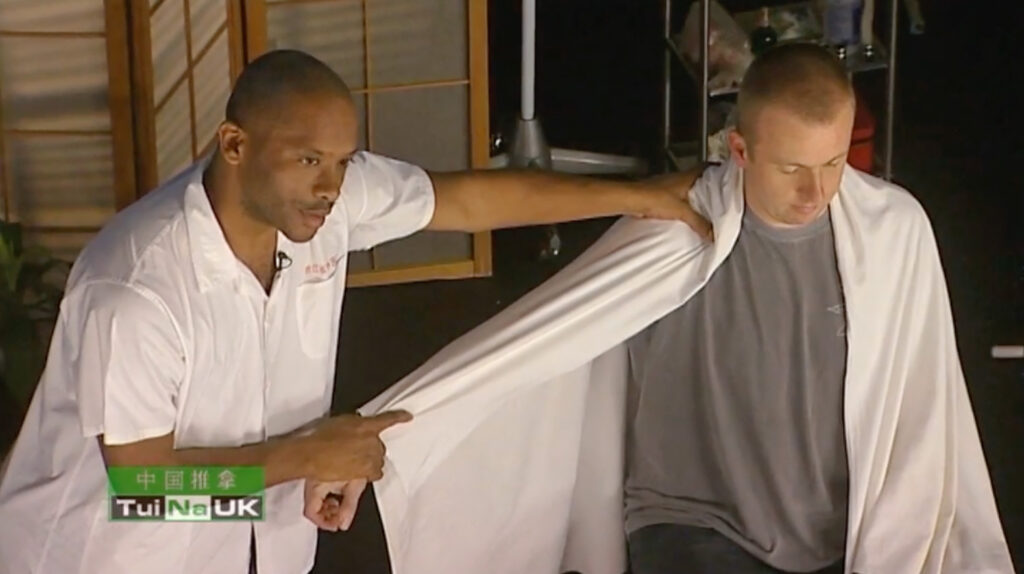
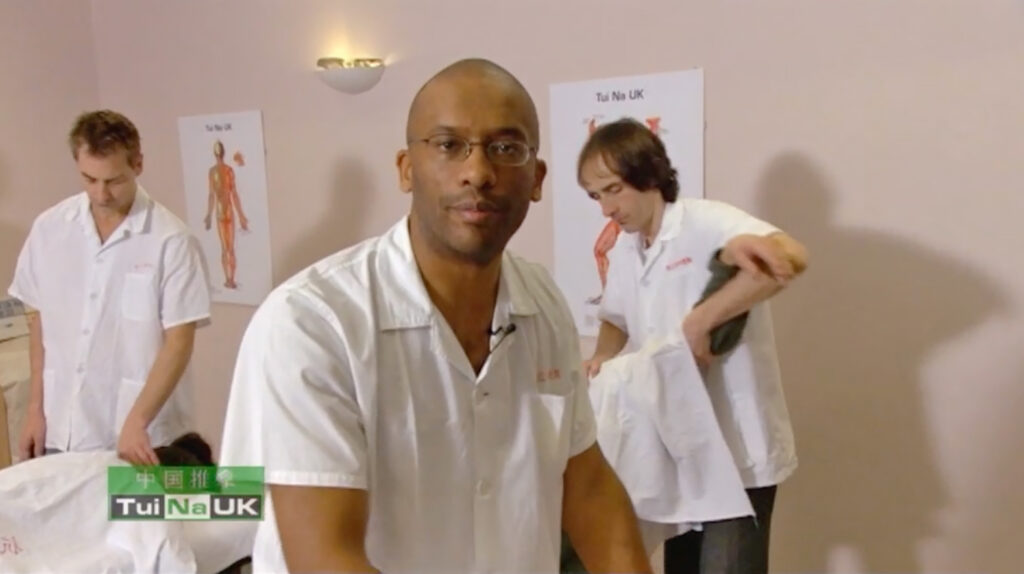
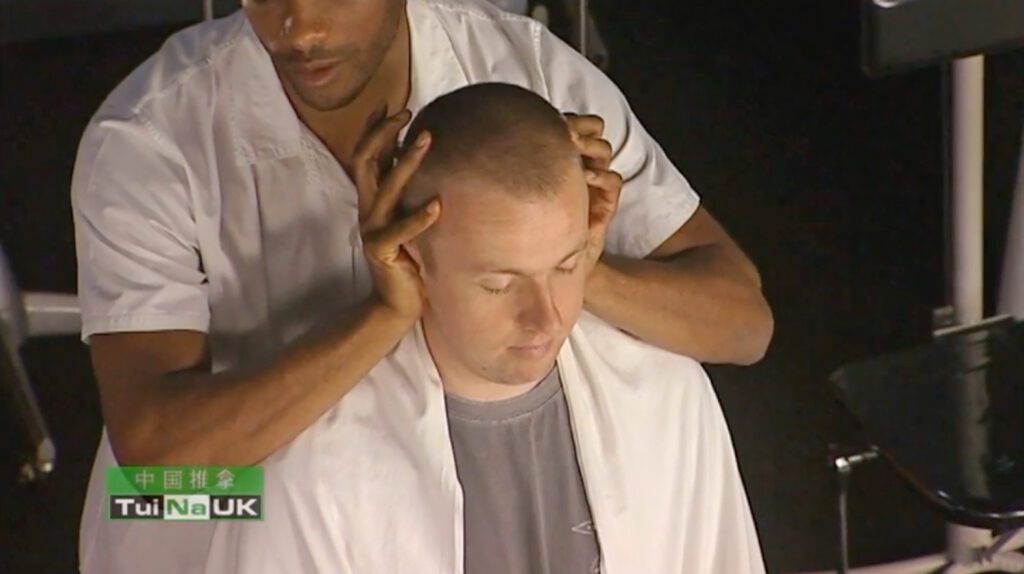
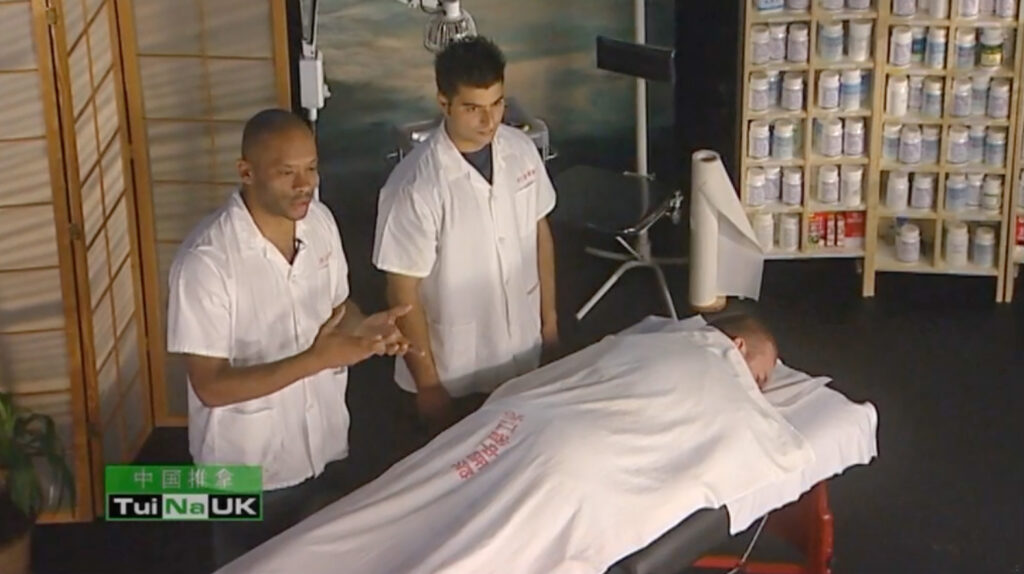
About ‘Tui Na Student to Master’
The making of ‘Tui Na Student to Master’ has taken many years. It began with me learning about the massage in Hang Zhou, Zhe Jiang, China, where I searched for top Doctors from whom I could gain the best knowledge. My sincere thanks goes to them for their patience, including: Dr Jiang, Dr Mao, Dr Ni, Dr Wu, Dr Li, Dr Ye, Dr Huang, Dr Sun and Professor Fan. These are just some of the Doctors who gave their time and knowledge unselfishly.
‘Tui Na Student to Master’ demonstrates many of the hand techniques and massage routines used for Tui Na massage, for example, Gun fa, Ban fa, Tui fa, Yi qi chan, Rou fa, Yao fa, Ba shen fa. Mo fa and Dou fa.
The ‘Tui Na Student to Master’ Journey
The video features Doctors from China and practitioners from England demonstrating Tui Na massage. The harder techniques to perform are covered in more detail in the video, allowing you more time to practice while following the techniques on screen. There are more than 120 mins of valuable information, equipping you with the knowledge and confidence to work with the following internal and external disorders :-
Internal: Zang fu disharmonies, blood and chi stagnations
External: Cervical spondylosis, frozen shoulder, RSI or Lumbar prolapses
Tui Na, or Tuina, is Chinese medical massage. It focuses upon the use of a variety of hand techniques to relieve pain, regulate the flow of blood and Qi through the body and restore functional anatomy. Tuina is considered as part of Traditional Chinese Medicine (TCM) in the same way as acupuncture and herbal medicine.
The hand techniques utilise a variety of principles in their application to specific disorders and can be divided into several categories of therapeutic effect. These categories include oscillating methods, pressure methods and passive joint movement.
Oscillating methods rely on the development of a wave pattern through repetitive movement. This movement generates a rhythmic wave pattern that penetrates deeply into the body and activates the circulation of blood and Qi, which also affects the nervous system. Pressure is a secondary aspect of this principle.
Pressure techniques rely on the use of force to deepen the effects on perpendicular pressure, an alternating pressure and release or a moving pressure. These techniques are used to facilitate the removal of obstruction, relieve blood and Qi stagnation and harmonise the flow of Qi and blood.
Passive joint movement features the use of a range of motion to help restore functional anatomy. It also helps relieve blood and Qi stagnation.
What ‘Tui Na Student to Master’ can teach
The aims of the Tuina massage are to disperse, tonify, activate, harmonise and warm the Qi and blood to bring about the body’s natural healing process. These aims are achieved by varying the speed, pressure and duration of a Tuina treatment. Using specific hand techniques will produce more pronounced effects. It is the development of the practitioner’s ability to control his or her body, breath and hands that separates the student from the master. While they will often appear similar in execution, the master’s techniques will be profoundly more effective due to the control and development of the body, breath, hands and stances. This is a process that is accomplished through determination, practice, endurance, insight and the help of senior Doctors of TCM.
